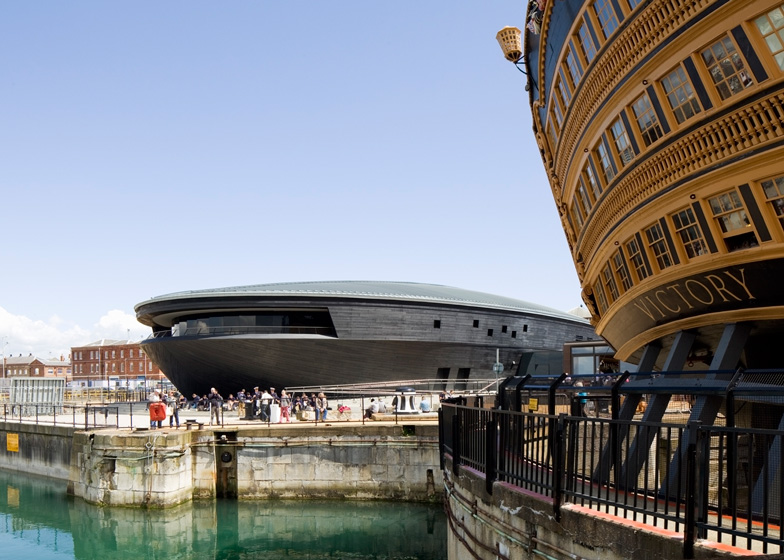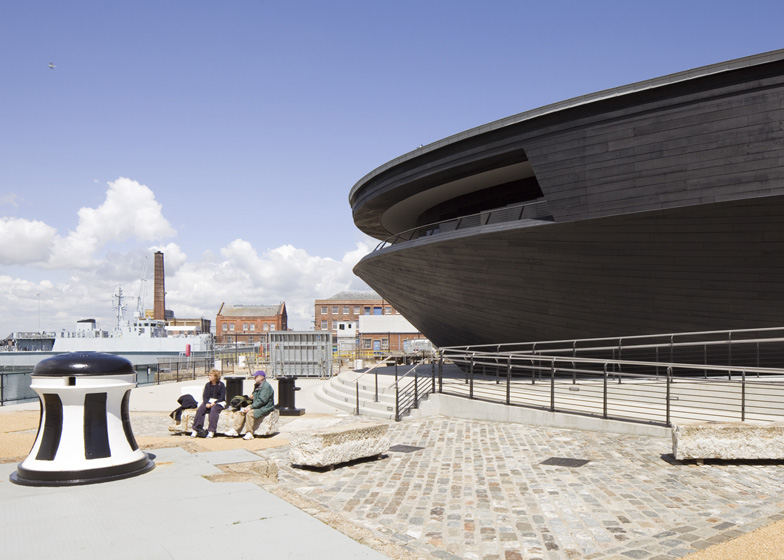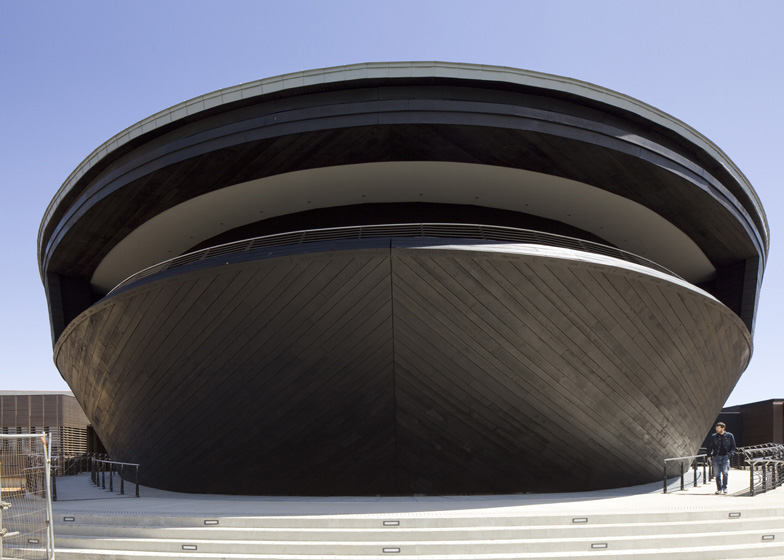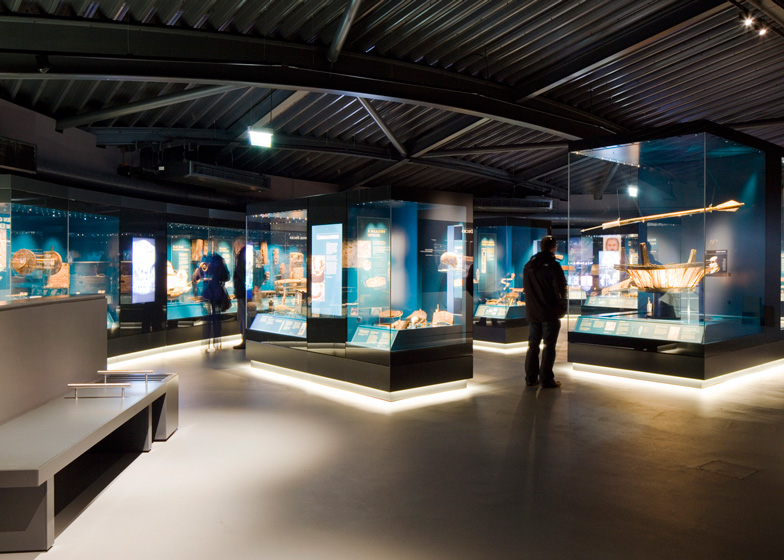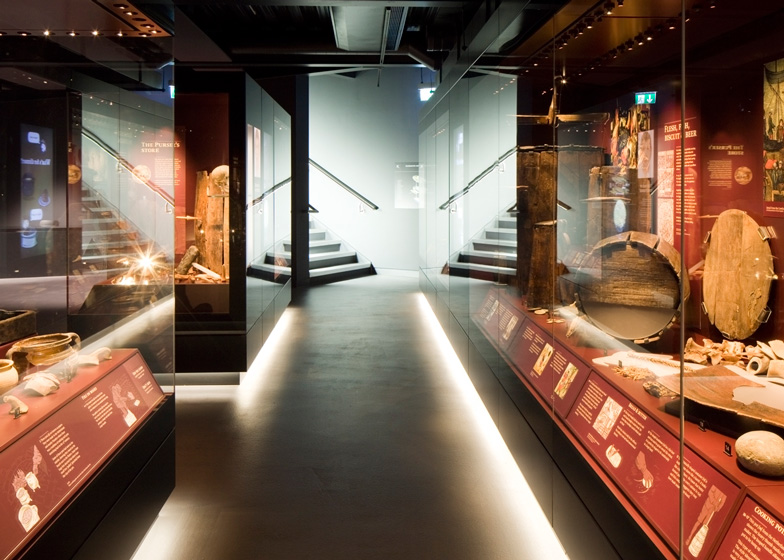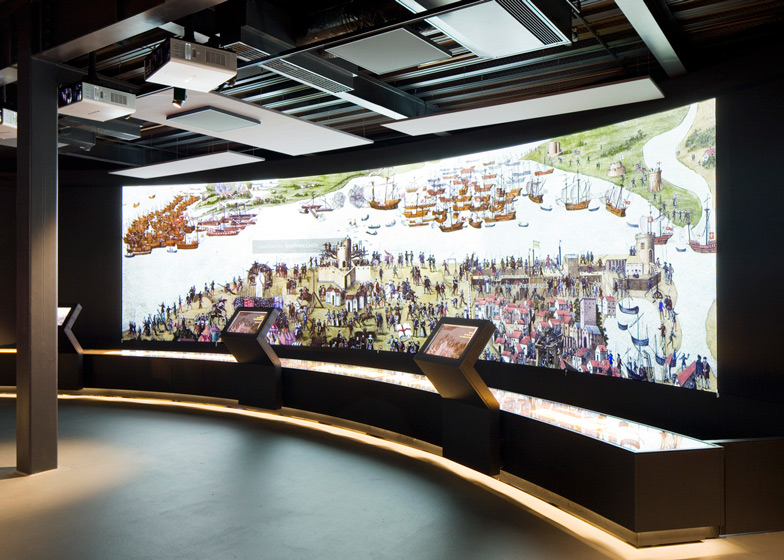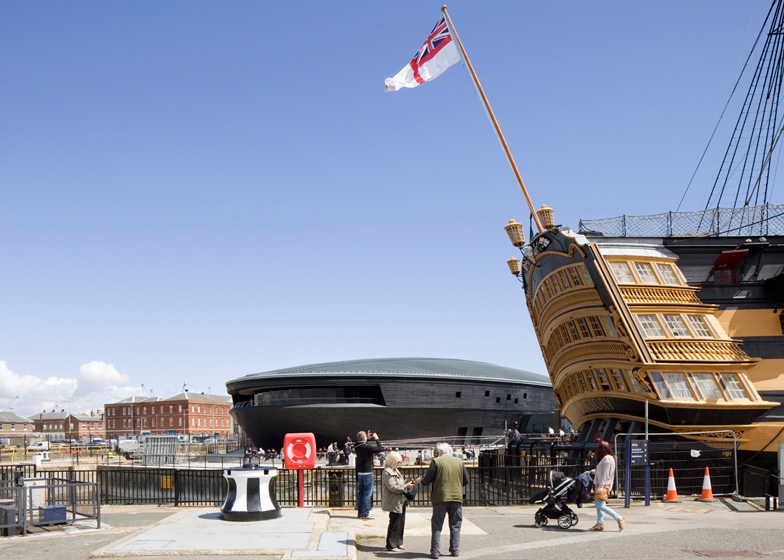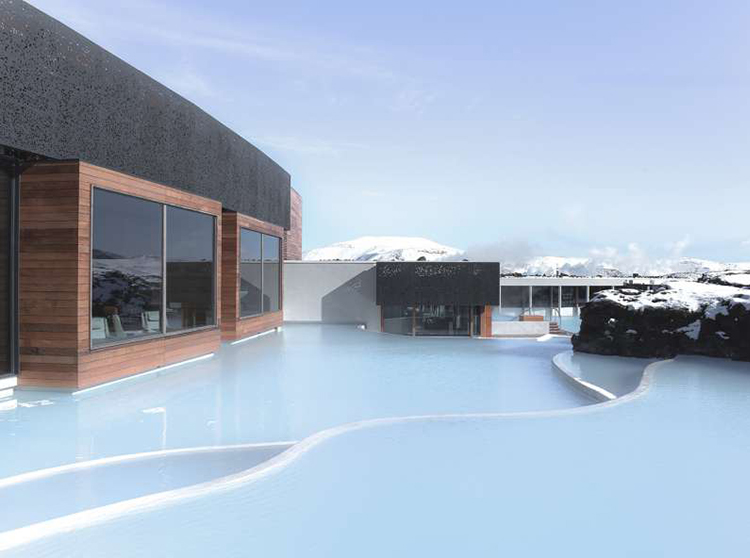The final resting place for the Mary Rose, the flagship of the naval fleet of Henry the eighth, which sank in the Solent in 1545, has now been completed. The recovered remains of the ship now form the nucleus, around which has been designed the Mary Rose Museum. Located in a heritage drydock in the dockyard of Portsmouth, the ship like shape of the museum mirrors the hull of the ancient vessel through a futuristic interpretation, by the practice of Wilkinson + Eyre Architects.
Due to the historic reference of the site as a listed drydock, the award winning architects encountered a long list of restrictions within the design and construction process, all of which were met and adhered to. The Mary Rose, which is still undergoing a preservation process, can be viewed from the three levels of the museum, from its dark clad exterior through to the ramp like transparent walkways of the interior. Thousands of artifacts were recovered from the wreck, offering the visitor a unique insight into the difficult lives of the seamen during the age of the Tudors.
The design of the interior of the museum was undertaken by the London based practice of Pringle Brandon Perkins + Will, who have recreated the dismal restrictive spaces which would typify life on-board the Mary Rose. With low ceilings and minimal lighting, the artifacts form the only element of illumination in various areas where the largely unlabelled pieces are allowed to ‘speak for themselves’ within this immersive experience.
From 31st May 2013, 30 years since she was raised from the shallow grave on the bed of the Solent, where she had lain for over four centuries, the Mary Rose is now on show for all to see at the Mary Rose Museum in Portsmouth.
